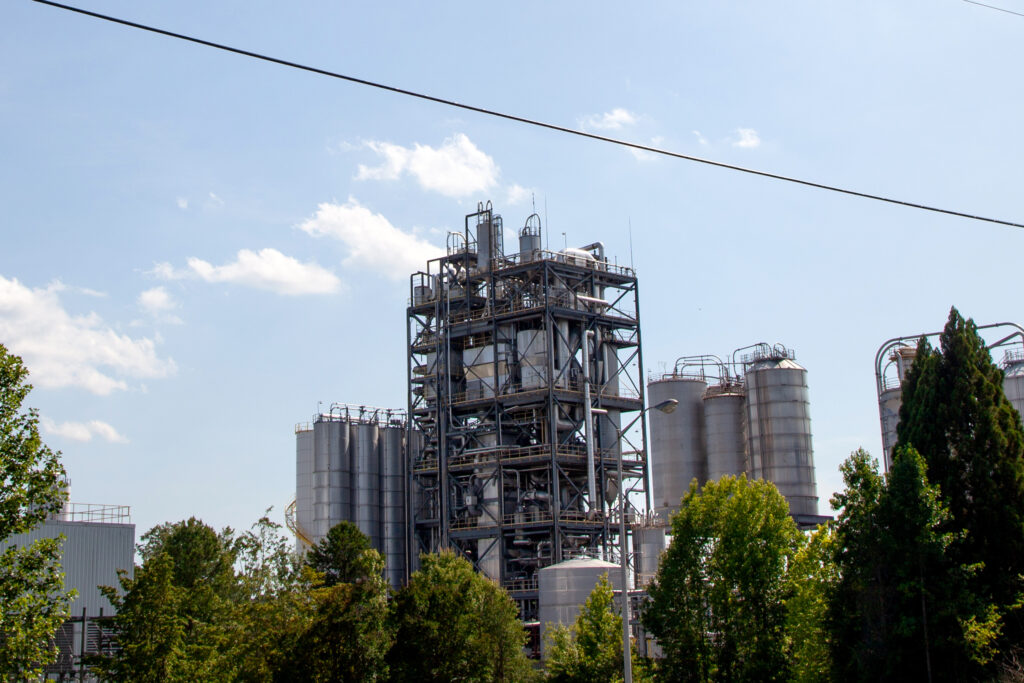Copyright insideclimatenews

ASHEBORO, N.C.—Some members of the public in attendance at the Environmental Protection Agency hearing last week called the City of Asheboro’s actions “despicable.” Others said they were “shameless.” And still another remarked that those who pollute the water—which data show Asheboro is doing—await “a special circle of hell.” About 100 people gathered in a classroom at Randolph Community College where, despite the federal government shutdown, the EPA held the public hearing it deemed “mission critical” about Asheboro’s 1,4-Dioxane problem. The problem, though, extends far beyond the city of 28,000 people in Randolph County. Studies from North Carolina State University show that North Carolina has some of the highest levels of 1,4-Dioxane, an industrial solvent and likely human carcinogen, in surface water in the country. One of the hotspots is in the Upper Cape Fear River Basin, where Asheboro’s wastewater treatment plant has polluted the drinking water of 900,000 people living downstream with 1,4-Dioxane. Long-term exposure can damage the liver and kidneys. The EPA has not established legally enforceable maximums for the chemical in drinking water, but did issue a lifetime exposure health advisory goal of 0.35 parts per billion. In January, the Biden administration EPA, under Administrator Michael Regan, sent a letter to the N.C. Department of Environmental Quality objecting to Asheboro’s proposed wastewater permit because it didn’t require the city to limit its 1,4-Dioxane discharges. Such limits, the EPA wrote, “appear reasonable and consistent with the requirements [of the Clean Water Act] and may be included in the permit.” If DEQ doesn’t include those limits in a revised permit, the letter reads, “exclusive authority to issue the permit passes to the EPA.” Asheboro requested a public hearing on the EPA’s letter of objection, which is allowed under federal law. The chemical originates at StarPet, a plastics manufacturer, and the Great Oak Landfill, which discharge or ship 1,4-Dioxane to Asheboro’s wastewater treatment plant. From there, it eludes conventional treatment systems and flows directly into Haskett Creek, which flows into the drinking water supply. Sanford, Pittsboro, Fayetteville, Brunswick County and Wilmington have all received slugs of the chemical at levels hundreds, even thousands, of times above the EPA’s health goal. Other municipalities, including Greensboro and Burlington, sharply reduced their 1,4-Dioxane discharges by pressuring their industrial sources to pretreat their wastewater or to find alternatives to 1,4-Dioxane. Asheboro could do the same, said Zoe Mehta, associate attorney at the Southern Environmental Law Center. “Asheboro can solve this problem. Its refusal is not fair to the rest of us who have to worry when we turn on the tap.” StarPet did install a pretreatment system for 1,4-dioxane in November 2020 to reduce the amount flowing into the wastewater treatment plan, but it frequently fails and is shut down for maintenance, according to a lawsuit filed by the Southern Environmental Law Center. The system has gone offline six times since 2021, and twice since the beginning of the year, court filings say. “Our community has been and remains a target,” said Casey Dixon, a fourth-generation Sanford resident. “While this hearing might be one evening for you, it’s the rest of my life.” She mentioned her 2-year-old nephew, who drinks contaminated water from his Spider-Man Sippie Cup. “Spider-Man can’t save him from 1,4-dioxane,” Dixon told EPA officials. “That’s your job.” DEQ’s original permit to Asheboro did require the city to control its 1,4-Dioxane discharges, with limits that would have been phased in over five years. But in 2024 state Administrative Law Judge Donald van der Vaart— a former DEQ secretary under a Republican governor with a reputation for weakening environmental regulations—sided with Asheboro. He determined DEQ had exceeded its authority and voided 1,4-Dioxane limits in the permit. Steven Bell, an attorney with Cranfill Summer who is representing Asheboro in the dispute, told the EPA the city is “committed to compliance with the Clean Water Act and state law.” However, Bell said DEQ deviated from administrative law when it developed the discharge limits, and he noted that a court upheld Asheboro’s claim. The EPA should not intervene in the permit, but “respect state procedure,” Bell said. Officials from downstream utilities urged the EPA to limit 1,4-Dioxane in Asheboro’s discharge. Kenneth Waldroup, executive director of the Cape Fear Public Utility Authority, said once the chemical enters the Cape Fear River watershed, “it is persistent and travels far.” It is expensive to remove 1,4-Dioxane from drinking water. “These are not small investments and the financial burden falls on our ratepayers,” Waldroup said. Mick Noland, who retired last from the Water Resources Division at the Fayetteville Public Works Commission, led the division as it spent $100 million on installing an advanced treatment system to remove PFAS. Unfortunately, that method, granular activated carbon, Noland said, “doesn’t touch 1,4-Dioxane. It’s irresponsible to expect Fayetteville to put in advanced oxidation” to remove the chemical and further hike ratepayers’ water bills. Susie Scott, who grew up in Asheboro, told EPA officials at last week’s hearing that she was “embarrassed.” “Please force the city I love to do the right thing,” she said. The EPA Region 4 administrator will now decide whether to uphold DEQ’s permit issuance, ask for a revision or reject it altogether. Because of the government shutdown, the timeline for the decision is unclear. Another unknown: where President Donald Trump’s EPA administrator, Lee Zeldin, is on the issue. In a separate court case, Union Carbide Corporation, a subsidiary of Dow Chemical, is contesting the EPA’s risk evaluation for 1,4-Dioxane. A judge for the Fifth Circuit Court of Appeals has stayed the case until the end of the year.



